An Arctic Traveler’s Guide to the Best Time to Visit Iceland
10 min readWe take pride in providing authentic travel recommendations based on our own experiences. We may earn a commission when you purchase a product or book a reservation. Learn more ›
The best time to visit Iceland depends on why you want to go to Iceland. Are you hoping for endless hours of daylight and a chance to see the Highlands? Or do you want to experience an Arctic winter and the possibility of seeing the Northern Lights?
There are so many reasons to visit Iceland, but unfortunately, there is no specific month where you can truly see all of the island. I’m pretty sure that’s how they get you to come back.
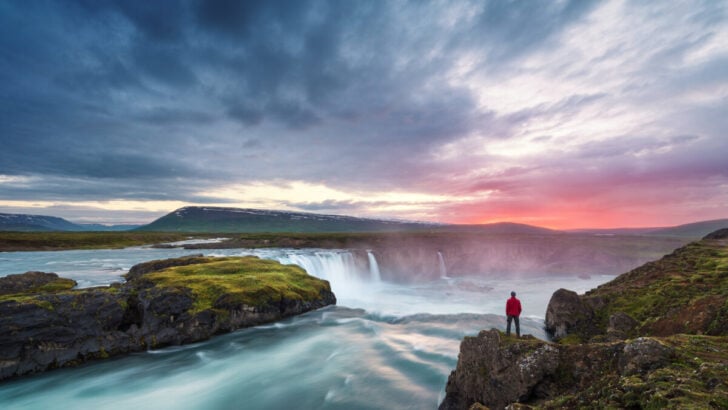

Excellent marketing strategy, Iceland! I have visited Iceland three times with a fourth trip on the horizon, and I’m sharing all my thoughts on what you can expect on a month-to-month basis so you can start planning your Icelandic adventure.
Page Contents
A Month-To-Month Guide To Visiting Iceland
This table should help you figure out when you want to visit Iceland. As you can see, there isn’t much overlap between some of Iceland’s most popular attractions.
Trust me, I wish I could watch puffins and the Aurora Borealis, but Mother Nature disagrees. Rude.
| Snow | Sunlight | Northern Lights | Puffins | Highland | Hikes | Crowds | |
|---|---|---|---|---|---|---|---|
| January | Yes | Low | Good | No | No | Short | Average |
| February | Yes | Moderate | Great | No | No | Short | Average |
| March | Maybe | Good | Great | No | No | Short | Average |
| April | Maybe | Good | Good | Maybe | No | Some | Least |
| May | Maybe | Great | Maybe | Great | No | Some | Least |
| June | No | Great | No | Great | Maybe | All | High |
| July | No | Great | No | Great | Yes | All | High |
| August | No | Good | Maybe | Maybe | Yes | All | High |
| September | No | Good | Great | No | Maybe | All | Average |
| October | Maybe | Moderate | Great | No | No | Some | Average |
| November | Maybe | Low | Good | No | No | Some | Least |
| December | Yes | Low | Good | No | No | Short | Least |
Once you decide what you’d like to see in Iceland, you can narrow down what month is best for you. There is no wrong answer here.
Chances are, as soon as you visit Iceland once, you’ll be tracking flights and planning a second trip. Welcome to the club.
Iceland in Summer
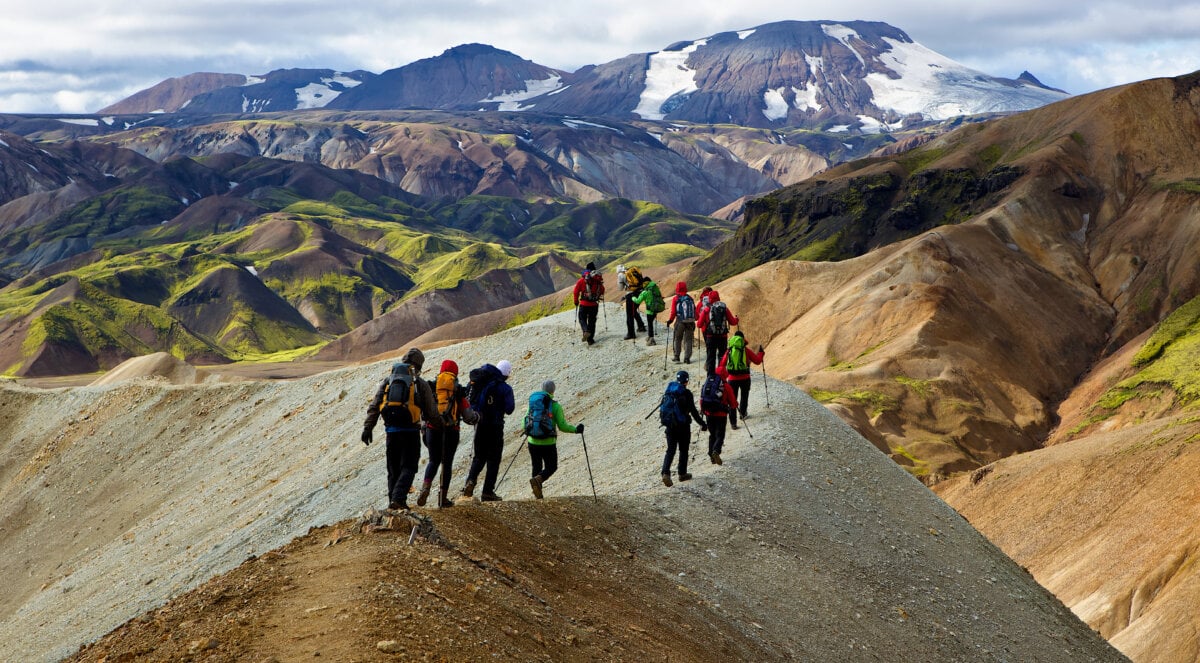

Summer is the most popular time to travel to Iceland. Beginning in June, tourism numbers increase exponentially, so expect larger crowds. Many believe this is the best time to visit Iceland, especially if your Iceland trip means hitting the hiking trails.
Peak summer is around July. The warmest months of the year bring some of the best weather, too.
The average temperature during the summer months is about 55 °F. While that’s not necessarily “warm weather” by my standards (I live in New Orleans, and that’s winter to me), it is perfect for all of the outdoor activities Iceland is famous for.
There is a way to beat the crowds during the high season. If you rent a car, consider taking advantage of the longer daylight hours and becoming slightly nocturnal.
You’ll encounter fewer people if you visit waterfalls like Seljalandsfoss or Skogafoss at 9 pm or later. You won’t be sacrificing any daylight, and you might even have these all to yourself!
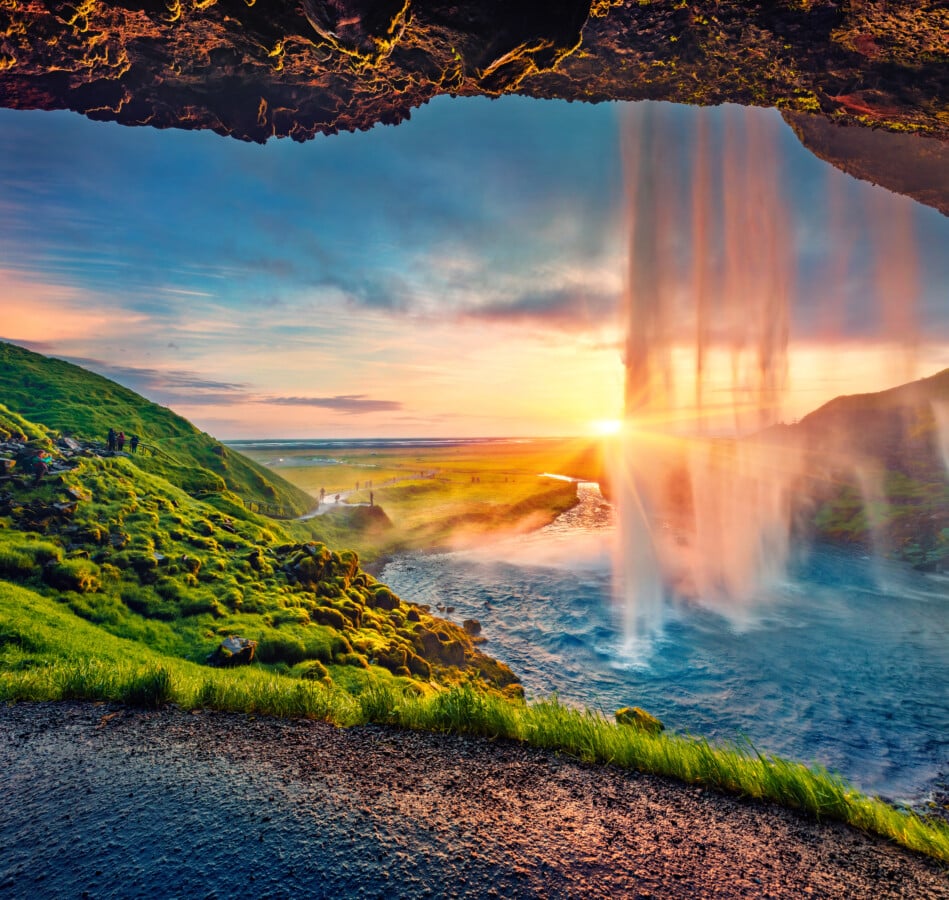

There is also much more daylight during the summer months. MUCH more… these are very long days.
Expect the sunrise in June around 3:30 am and the sunset close to midnight. Exploring Iceland under the Midnight Sun gives you the benefit of not having to fight for daylight since you’ll easily have plenty to spare.
With no snow on the ground, it’s the perfect time of year to rent a car and embark on an epic road trip around Ring Road. Most of the F-roads are also open this time of year, allowing you to explore Iceland’s Highlands.
The summer months are also ideal for hiking. The Landmannalaugar area in the Highlands is one of the most popular summer hikes in Iceland, and you can take a guided hike through Landmannalaugar that ends with a relaxing soak in a natural hot spring nearby.
Summer is also a great time to see some of the wildlife, too. Puffins migrate to Iceland from May until July, and these curiously cute creatures are found all over the wester side of the island.
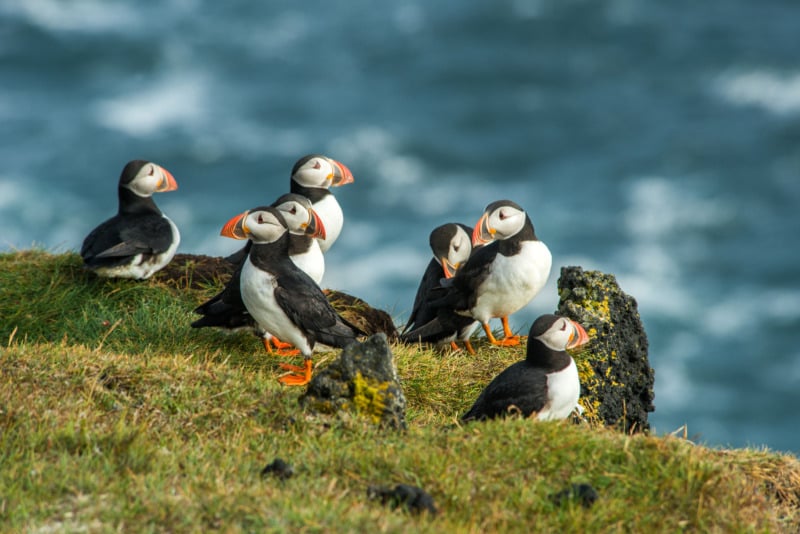

Whale watching is also ideal in the summer months. Thanks to a wide variety of fish and krill in the ocean, there are 23 species of whales around Iceland.
Minke whales are the most common, with humpback whales and orcas taking the bronze and silver. Even though you technically can whale-watch year-round, the summer months are considered the high season for viewing them.
Husavik, Akureyri, Reykjavik, Snaefellsnes Peninsula, and the Westfjords are the best places to go whale watching in Iceland. If you’re visiting North Iceland, Husavik is worth a day trip. This little fishing village is known as the “Whale Watching Capital of Europe” and offers whale-watching tours year-round.
Even those staying in Reykjavik can jump aboard a whale-watching cruise. Just remember that whale sightings are never guaranteed!
Iceland in Fall
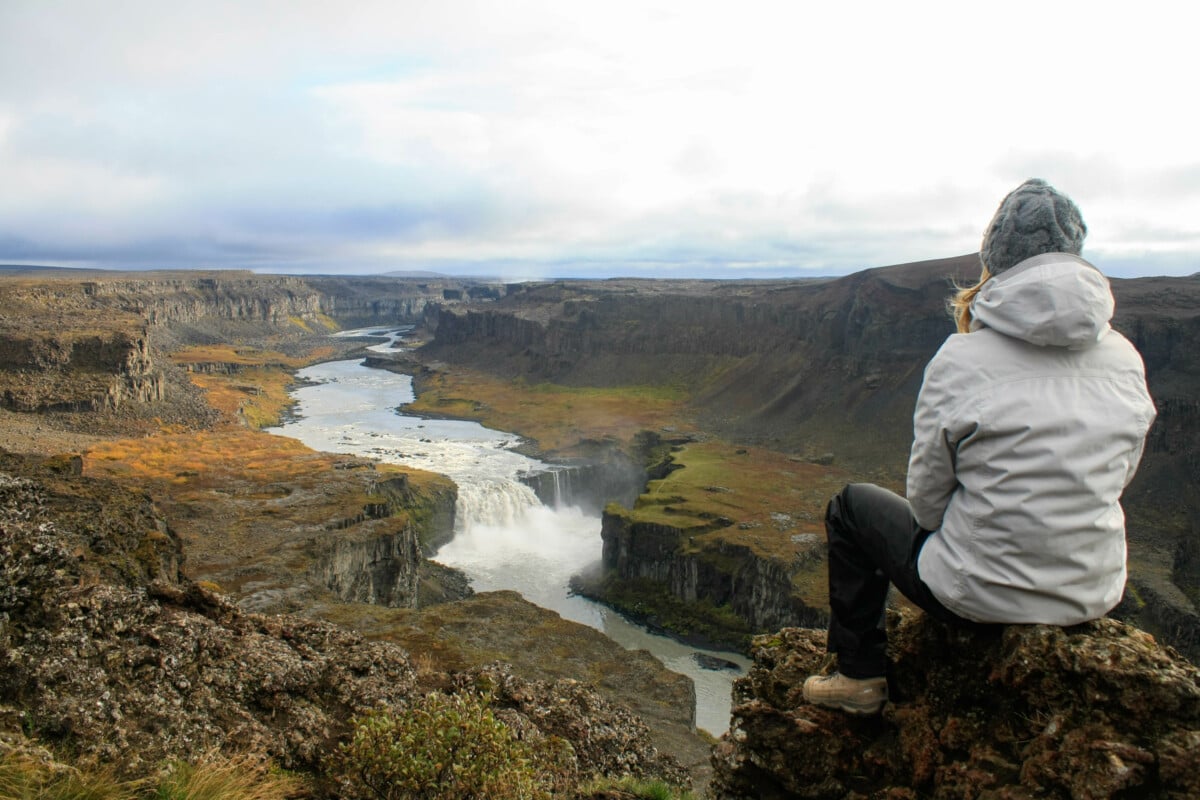

Fall in Iceland begins in late August/early September and continues to October. Iceland likes to joke that there are only two seasons in Iceland: summer and winter.
Fall and spring are extremely short seasons. Expect fewer tourists during the low season while still having plenty of opportunities to explore Iceland.
Fall brings cooler temperatures and shorter days. The average temperature during fall in Iceland ranges from 30 °F to 50 °F. Layers will be your best friend since weather conditions can change quickly.
Waterproof outerwear is key regardless of when you visit Iceland, but particularly during fall. You may have a sunny morning, a rainy afternoon, and a snowy evening.
This is a great time of year to explore Iceland’s south coast. Boat tours of the Jökulsárlón glacier lagoon run until mid-October, with options to jump on the tour from Vik or Reykjavik.
Even if you miss the boat tour season, strolling along the famous Diamond Beach is one of the most popular attractions along the south coast. Keep your eyes peeled for seals! They often are seen relaxing on a chunk of ice or swimming around.
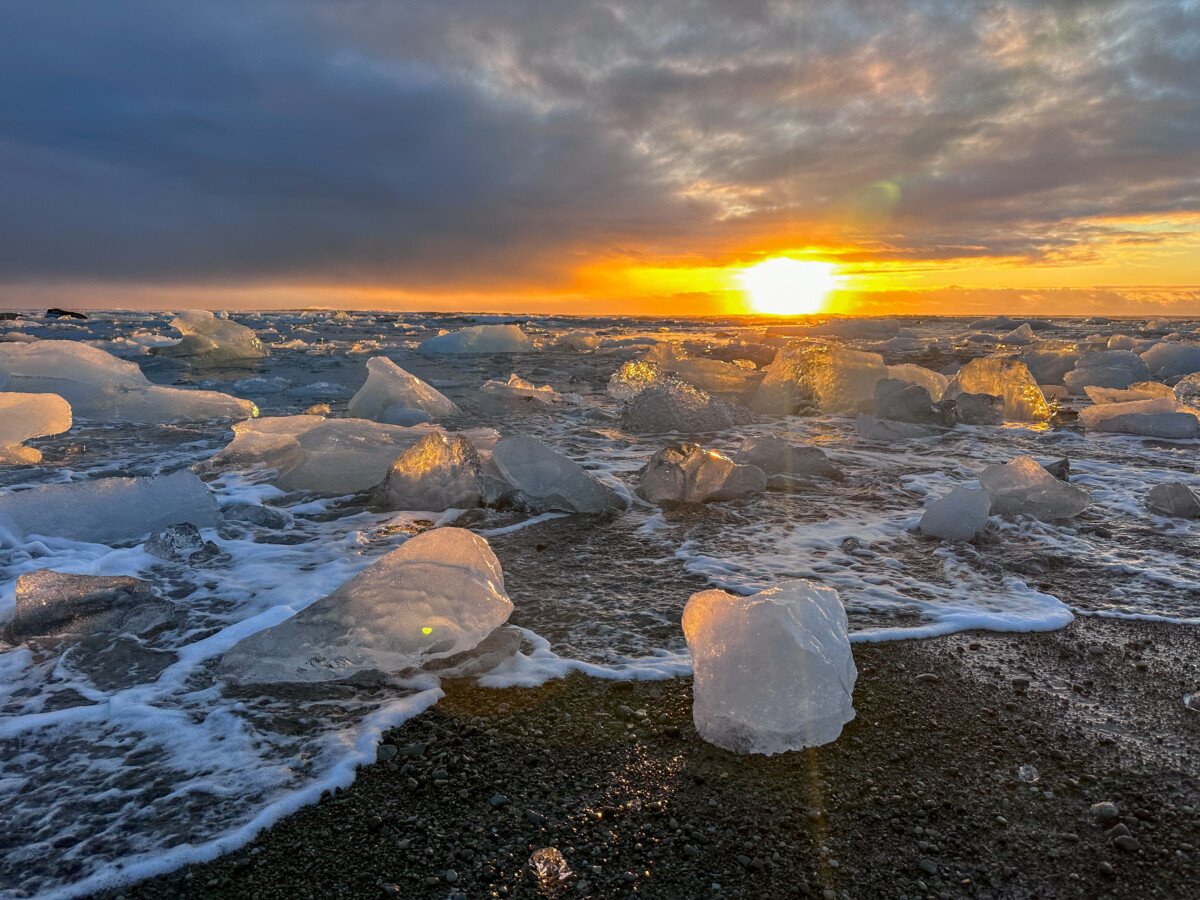

Fall is the best time to visit Iceland on a budget. Since fall is considered a shoulder season, there will be fewer crowds and better deals for lodging and tours. As those long daylight hours come to an end, you’ll be trading puffins and the Highlands for ice caves and the Northern Lights.
A trip around Ring Road is still on the table, but you’ll want to closely monitor the road conditions. East Iceland and North Iceland can become winter wonderlands toward the end of fall.
Visitors without winter driving experience are better off taking multi-day tours and letting a local do the driving. I caught a bad snowstorm one October and watched two cars get blown off the road. The weather in Iceland is extremely unpredictable!
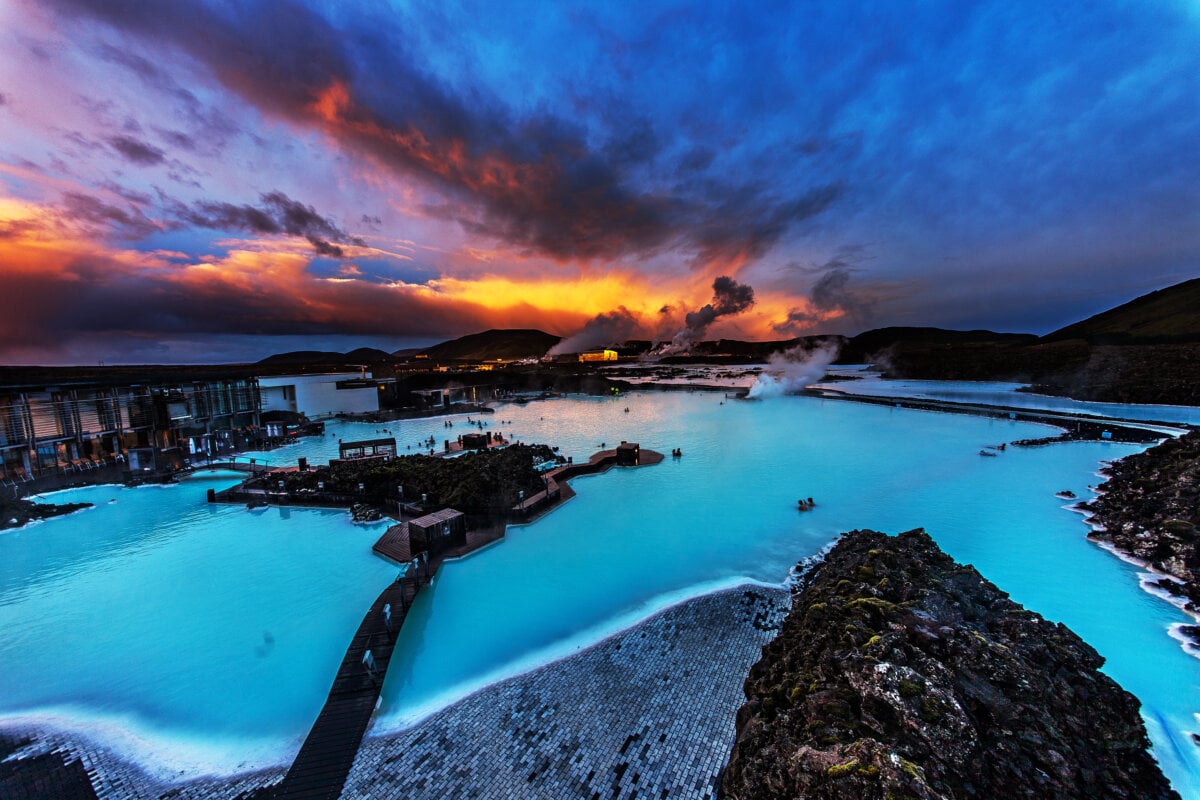

For visitors staying in Reykjavik, I’d recommend taking advantage of the city’s swimming pools. Iconic tourist attractions like Blue Lagoon and Sky Lagoon are dreamy, but there are plenty of local swimming pools that offer the same amenities at a fraction of the price.
Iceland in Winter
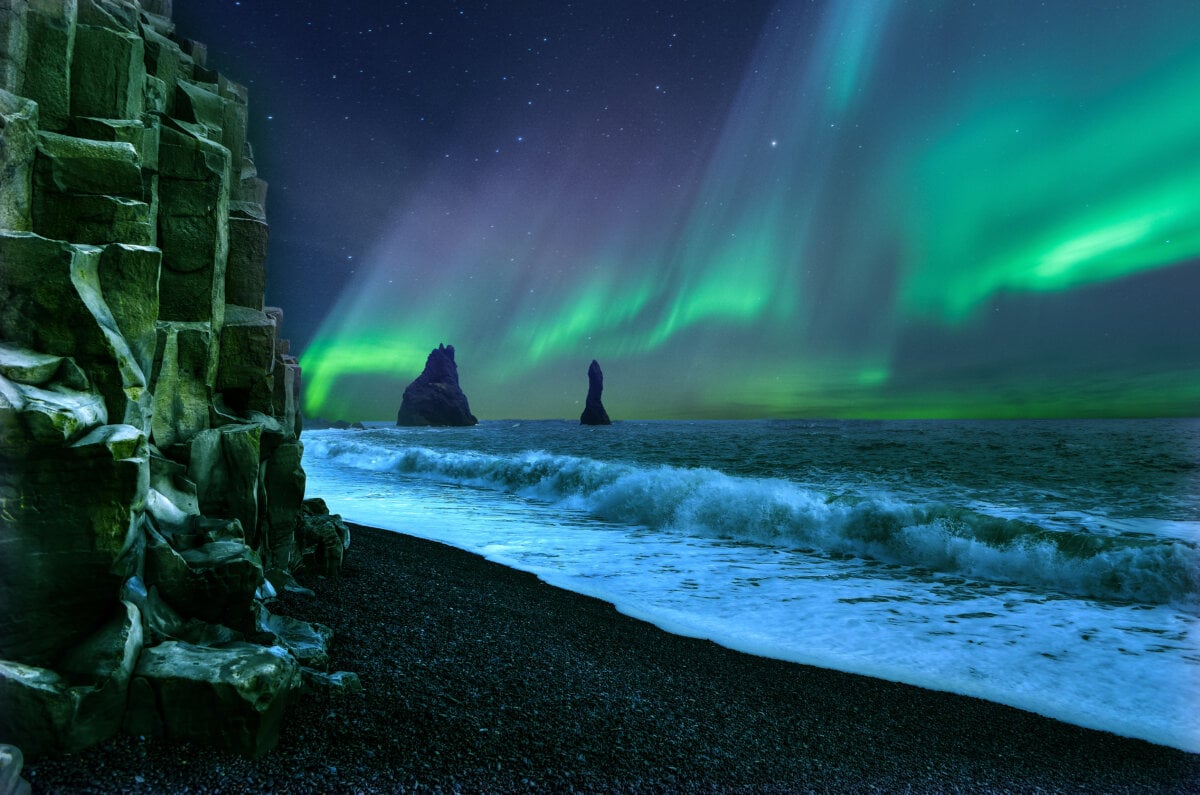

If you thought fall was cold, buckle up, buckaroo. December through March brings much colder temperatures, snowy landscapes, and limited daylight hours, but there’s a big payoff to visiting Iceland in the winter months: the Aurora Borealis!
The Northern Light season in Iceland runs from late September until April. November, December, and January are considered the best months to see the Aurora Borealis, though take that with a grain of salt.
Yes, you’ll have much more darkness, which is key to seeing the Northern Lights, but seeing them depends on many other factors that are outside of our control. Solar activity and clear skies are the other two ingredients you’ll need.
December and January have the shortest days, with about 4-5 hours of daylight hours. Don’t let that deter you; you can still do plenty of sightseeing.
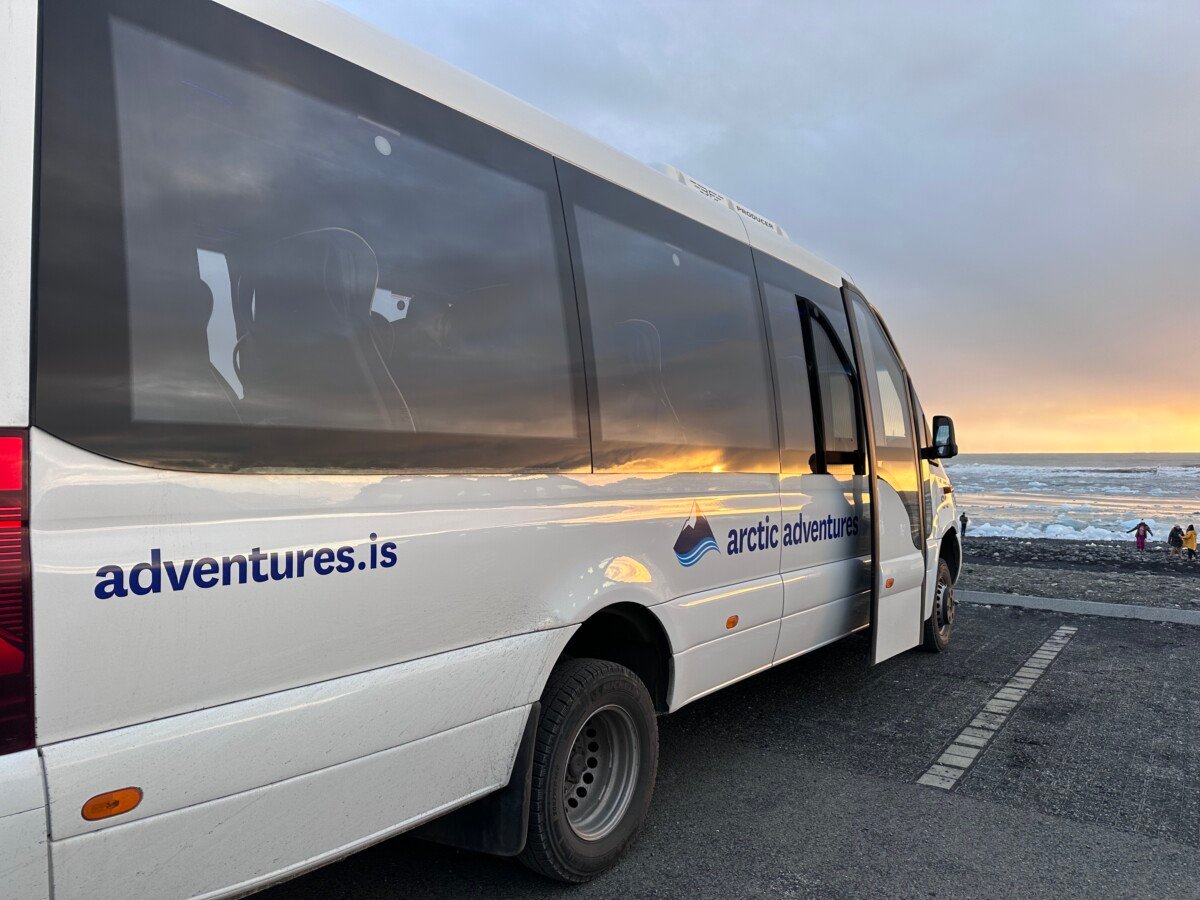

If you’re uncomfortable driving in winter conditions, taking tours from Reykjavik is a better idea. There’s no better way to ruin your day than spending hours on the side of the road waiting for a tow truck in freezing conditions, so why not let the professionals take the wheel?
Except for the Highlands, you can take day tours or multi-day tours to just about anywhere in this beautiful country. Yes, you won’t have much daylight to work with, but these tours account for that. You’ll be leaving early in the morning (usually around 8 am), so you’ll arrive at the destination around sunrise.
Visiting Iceland in winter is the best time to see the Northern Lights. There are plenty of Northern Lights tours that you can join, but if the Aurora is strong enough, you’ll also be able to see them from downtown Reykjavik. Check out our recommendations for the best hotels in Iceland for Northern Lights spotting.
There are plenty of perks for visitors who embrace the long nights of winter in Iceland. Golden Circle tours are available year-round, and seeing the mighty Gullfoss (or any of Iceland’s waterfalls) completely frozen over is a unique experience.
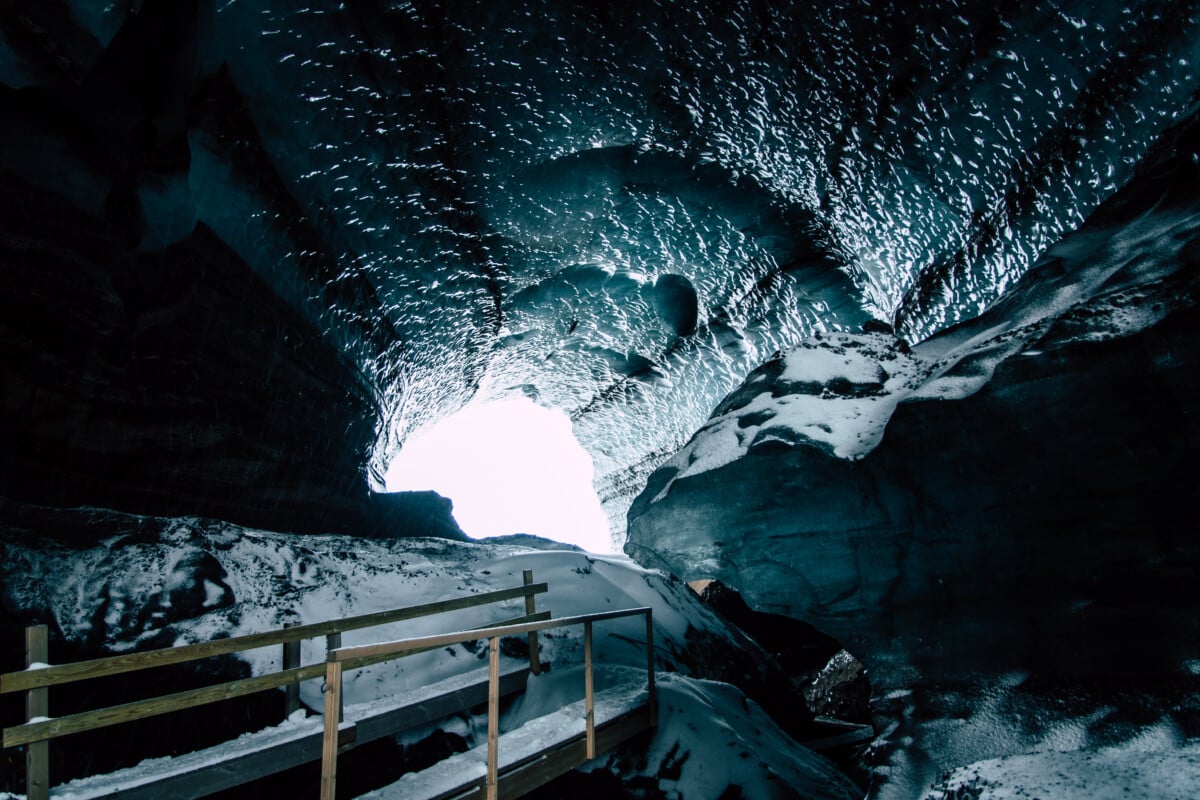

Winter is also the best time to visit ice caves. Most of the ice caves in Iceland are along the south coast, and they all require a professional guide. I’ve done a few ice cave tours, and Katla Ice Cave was by far my favorite.
Feel free to check out my video of my experience taking the Katla Ice Cave tour, but just remember, these ice caves are completely natural and are different every year. They melt away during the summer, and then in the fall, experts head out onto the glacier to see what the caves look like for winter.
Average temperatures during winter months are about 32 °F for southern Iceland and 14 °F for North Iceland. It’s not the temperature that will get you; it’s the wind. Wind gusts average at 20-40 mph, and they can get up to 70mph during a storm.
Norwegians have a saying: “Det finnes ikke dårlig vær, bare dårlig klær!” which translates to: “There is no bad weather, only bad clothes!” So pack sensibly. Make sure your outer layer is both waterproof and windproof to stay comfortable and warm when Iceland’s weather decides to flex.
Another perk to visiting in winter is that it is far quieter, with February being the least popular month for tourists to visit. If you value fewer crowds, prepare for short days, long nights, and cold weather!
See Related: Silfra Rift and Fissure in Iceland: Where East and West Meet
Iceland in Spring
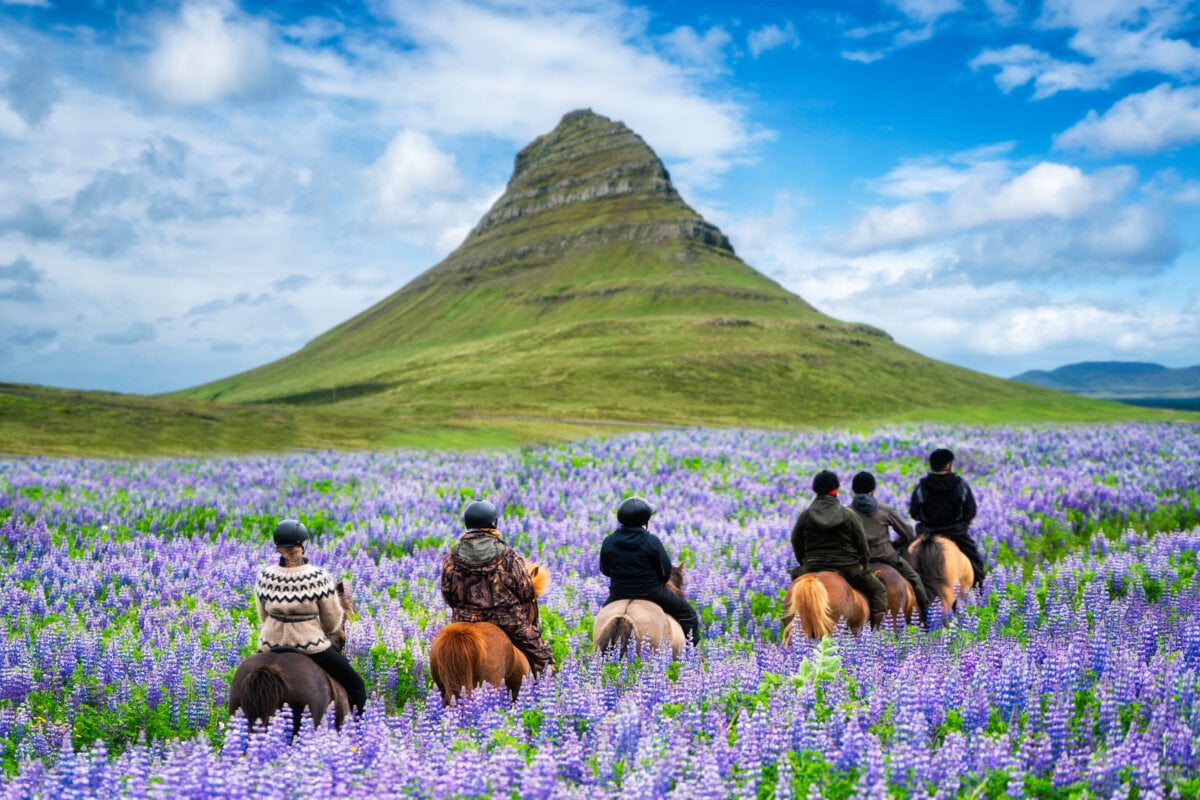

Beginning in April, spring in Iceland brings a welcome change of scenery after months of darkness. Spring is still considered a shoulder season with fewer crowds and minimal guarantees of everything from puffins to the lights.
If you want to cast a wide net, I recommend visiting Iceland in the spring. You might get lucky during the low season and see the Northern Lights and catch an early puffin migration. On the flip side, you might also catch a seasonally late snowstorm. Stranger things have happened!
Average temperatures during spring are about 37 °F, so it’ll still feel very much like an Iceland winter in the early stages. By late May the average temperature jumps to 53 °F with roughly 16 hours of daylight toward the end of the month.
While the countryside slowly regains its color, many Icelanders won’t consider it spring until they hear the iconic call of the golden plover. These migratory birds arrive in Iceland by the end of March and spend their summers here. They have a very distinctive call, so listen out for one during your visit.
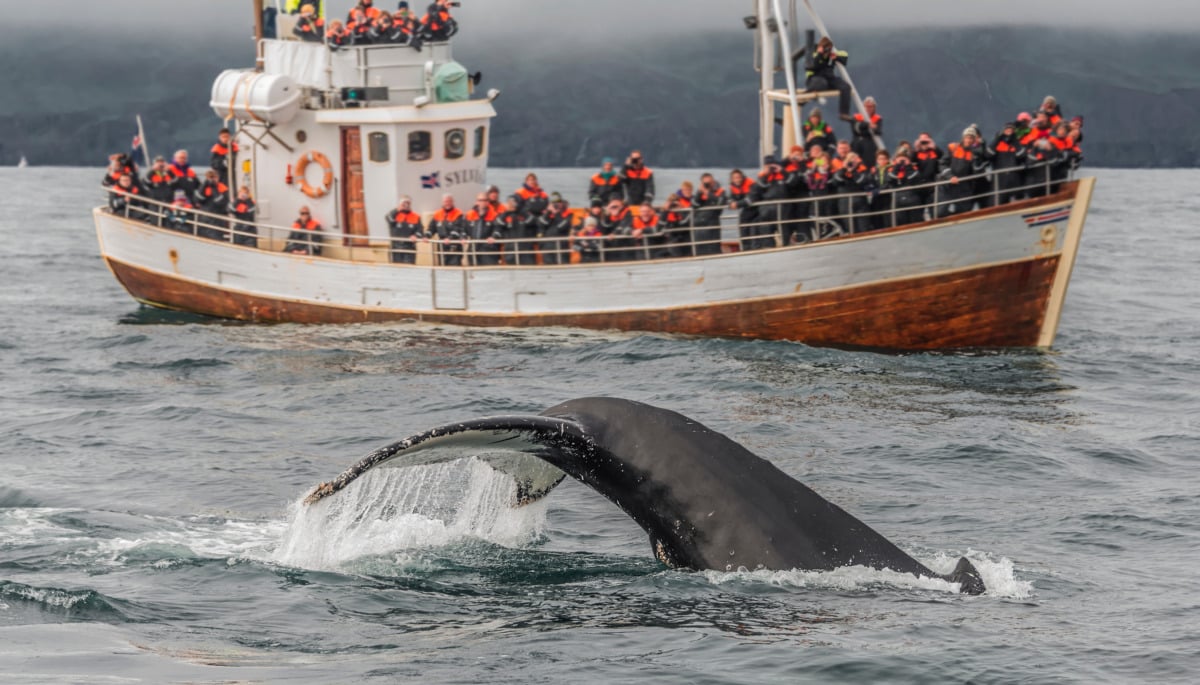

Speaking of wildlife, spring is one of the best times of the year to spot some of the local wildlife. April and May are some of the best times to watch whales, puffins, and Arctic foxes.
The Westfjords are where you’ll have the best opportunity to see Arctic foxes, while the southern coast is a favorite spot for puffins. Northern Iceland is known for whale watching, but there are plenty of boat tours that depart from Reykjavik.
Most of the mountain roads (F-Roads) are not open yet, but you can take advantage of the good weather and visit the majority of the country relatively easily on your own. Depending on the snow melt, hiking trails will start to open around this time, too.
Plus, taking advantage of the geothermal activity and soaking in one of the many natural hot springs around this amazing country is just what the body needs after a long day of exploring. There’s a reason the springs are the most iconic destinations on the island.
See Related: Best Whale Watching Places in the World
FAQ
When is the best time to visit Iceland to see the Northern Lights?
The Northern Lights season is from September until April. November, December, and January are considered the best months to see the Northern Lights since they are the darkest months. Remember that the Northern Lights are a natural phenomenon and can never be guaranteed.
When is the best time to visit Iceland for whale watching?
You can go whale-watching in Iceland year-round, but the peak season is around June-August. Husavik in North Iceland is considered the “Whale Watching Capital of Europe,” but you can also find whale-watching tours in Reykjavik throughout the year.
What clothing should I pack for a trip to Iceland?
Regardless of what time of year you visit Iceland, packing layers is key. No matter the time of year, assume that it can change to winter weather at any time.
The weather in Iceland changes drastically, as do the temperatures in businesses, buses, and restaurants. Waterproof and windproof clothing is also very important, as well as a good pair of waterproof shoes.
Related Resources
- About the Author
- Latest Posts
Jacks is a New Orleans native passionate about exploring the Arctic region. She’s a frequent writer and contributor to Only in Your State. A mediocre ukulele player, photographer, and artist, she thrives on spontaneous solo adventures and encourages everyone to follow the deal, not the destination. When she’s not traveling, she’s feeding the neighborhood crows, squirrels, and bluejays that have befriended her, much to the dismay of her cat, Tugger.



